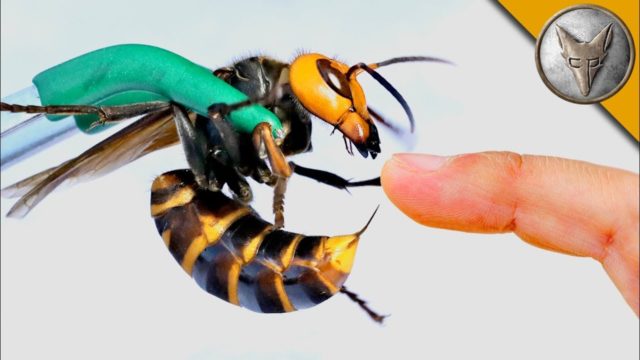
Recently was known through the media that the Asian giant hornet has been seen prowling in the northern United States, probably migrating from Asia. According to this report, it was first spotted in December 2019 at Washington State.
Regarding its possible arrival in Costa Rican lands, both sanitary authorities and scientists are keeping track of its migration trajectory in the United States, in case it eventually arrives in Central America and thus be prepared.
What is the Asian giant hornet like?
The Asian giant hornet, or Vespa mandarinia, has a size of about five centimeters and a wingspan of seven and a half centimeters; it is the largest species of hornet known. Additionally, they can use their shark fin-shaped jaws to destroy beehives in a matter of hours, decapitating them and flying off with the bodies to feed their young, causing heavy losses for beekeepers.
As for its sting, it has a dangerous neurotoxin capable of causing cardiac arrests and anaphylactic shocks in humans, especially with multiple stings. Although scientists point out that this species is generally not aggressive towards people or pets.
According to specialists, this hornet can attack if provoked. They also point out that these insects inhabit warm areas of East Asia where, according to statistics from the region, they kill fifty people a year with their bites.
Rafael Calderón, a researcher at the Tropical Beekeeping Research Center stated: “Above all, one must be cautious, and not create alarm, but rather follow up on their distribution path in North America and be attentive to the scientific information that is being provided.”
The main concern comes because these animals feed on honey bees, vital for life on Earth, and whose populations have been dramatically reduced by climate change. That is why the Costa Rican authorities make a call to prepare for the eventual arrival of the hornet. They recommend the optimal management of the hives: queen change, feeding during the lean season, and honeycomb changes, among others. Also, the health review of the hives must be carried out, by sending samples of adult bees and young to the respective laboratories.
Mexico in Epidemiological surveillance due to the Asian giant hornet

Through a statement, the National Commission for the Knowledge and Use of Biodiversity (CONABIO) made public that the giant Asian hornet has not yet been detected in Mexico.
However, it was known that this nation is under epidemiological surveillance to detect the presence of this hornet in the Border States. And they maintained that if the Asian giant hornet arrived, the country would be in a position to react promptly.
In the same way, they made the call not to exterminate all the wasps that could be found because “In Mexico, there are several large tarantula hunting wasps. The solution is not to exterminate wasps or bees since many of them play a very important role in natural ecosystems.”
We believe in the New Earth Shift towards a sustainable lifestyle that creates our own resources and is moving towards self-governance between the people. This will enable people to have more time for themselves and their practice as well as taking care of the planet and learn the traditional ways that once lead the land.http://resonancecr.com/
